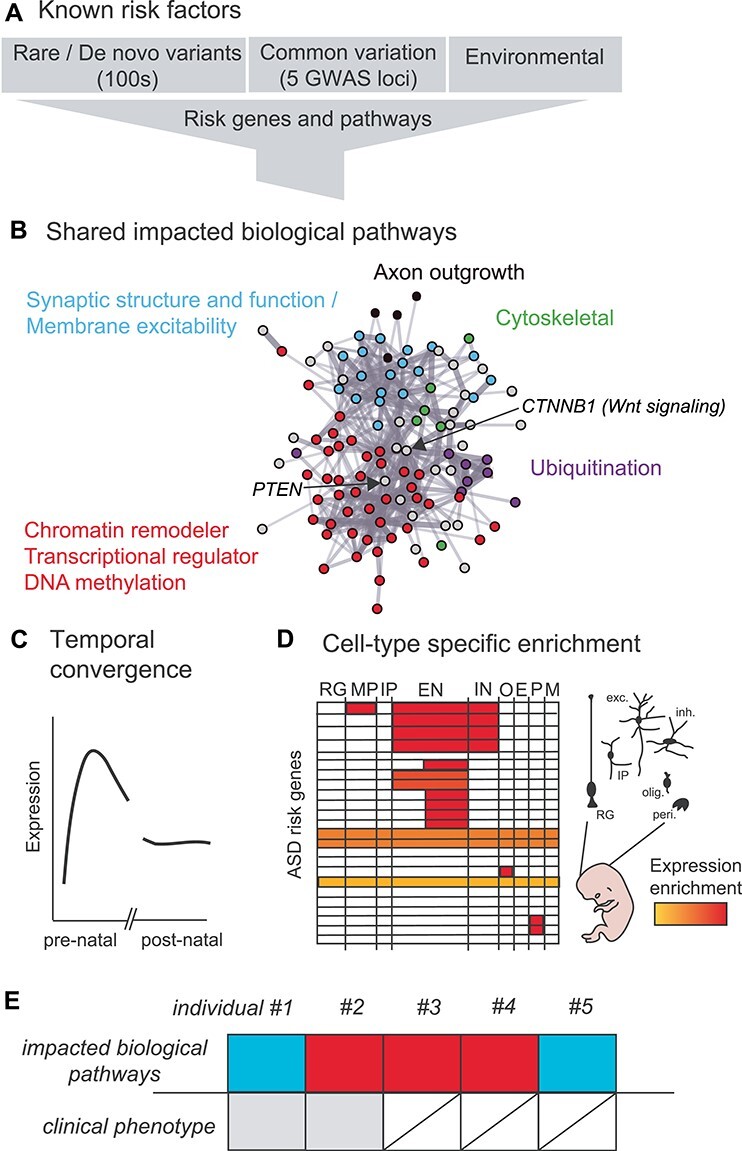Figure 1 .

ASD risk factors converge onto shared biological pathways and cell-types during early brain development. (A) Rare inherited, de novo and common inherited variants contribute to ASD liability, in addition to environmental risk factors. (B) Genetic (and likely environmental) factors converge onto biological pathways as schematized in this PPI network made using the STRING database (62) derived from risk genes in (36,41). Genes implicated in synaptic transmission (blue), transcriptional and epigenetic regulation (red), protein ubiquitination (purple), axon outgrowth (black) and the cellular cytoskeleton (green) are highlighted. Risk genes that do not fall into those categories are shown in gray and include those related to Wnt signaling, such as CTNNB1, and the cell cycle, such as PTEN. (C) The expression of risk genes peaks during prenatal development but is not exclusive to this period. Adapted from (63). (D) Expression of risk genes is concentrated in developing glutamatergic neurons. RG—radial glia; MP—migrating progenitor; IP—intermediate progenitor; EN—excitatory neuron; IN—inhibitory neuron; O—oligodendrocyte precursor cell; E—endothelial cell; P—pericyte; M—microglia. Adapted from (64). (E) Impacted biological pathways and phenotypes will vary across individuals and in their convergence and divergence on clinical manifestation.
